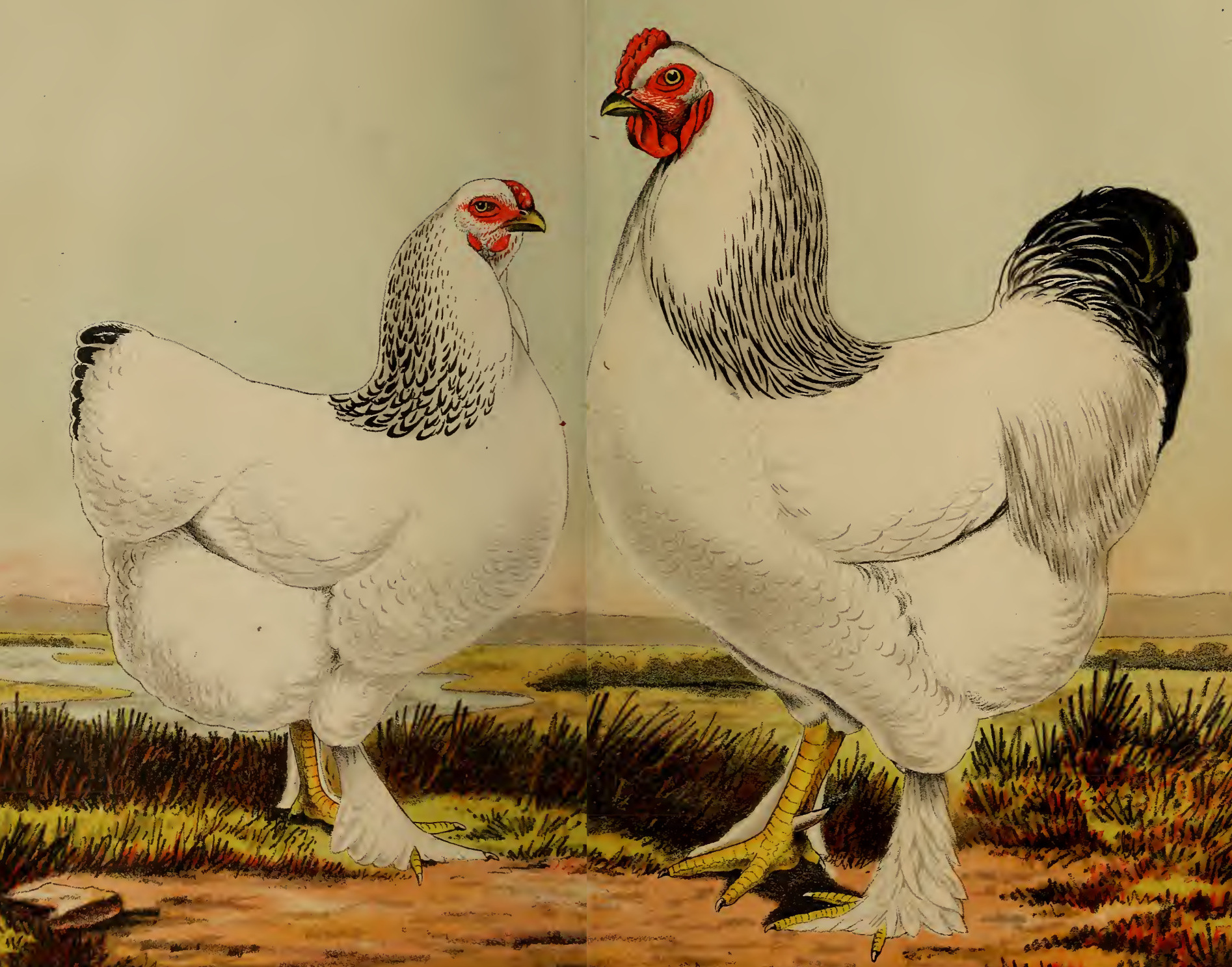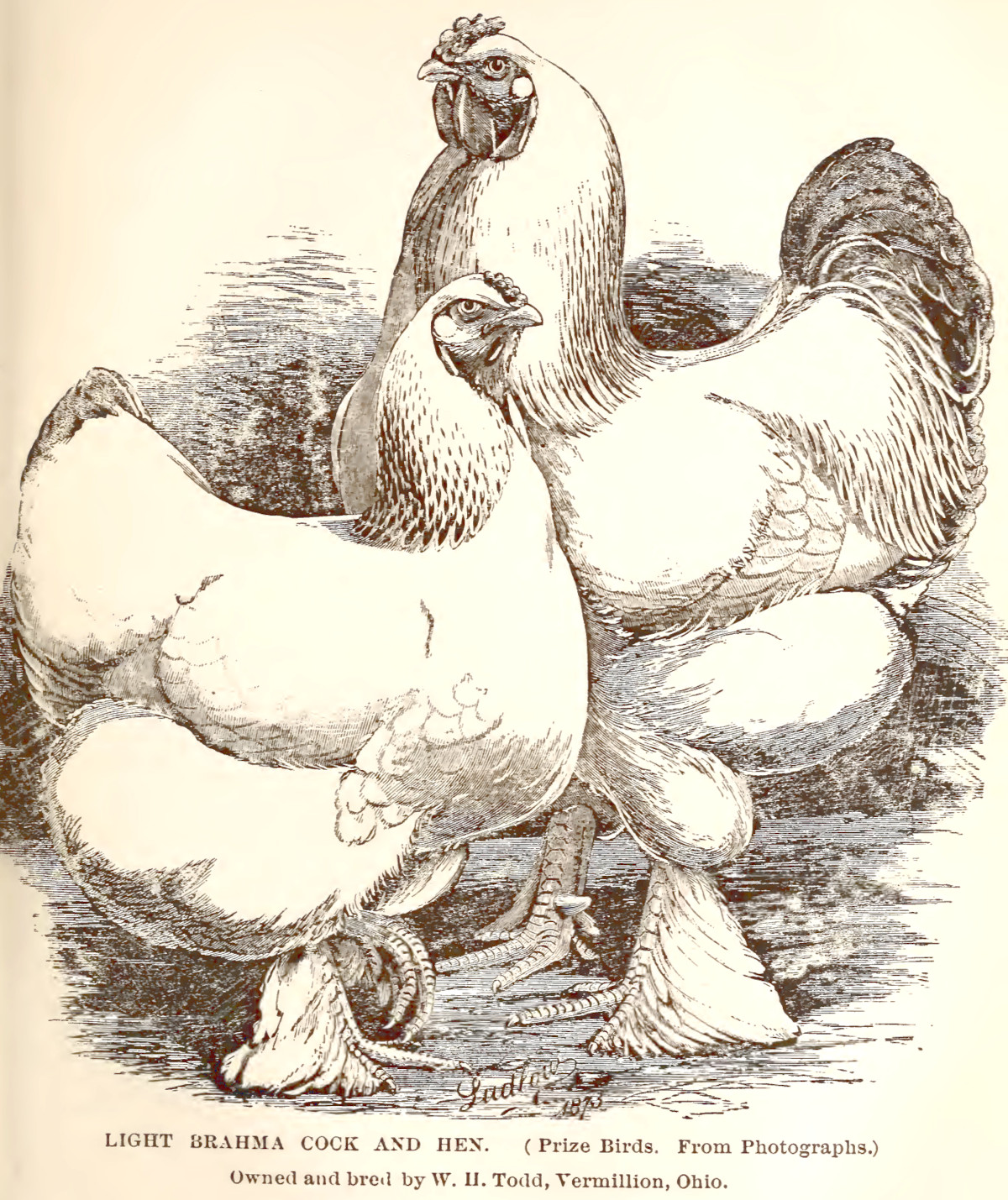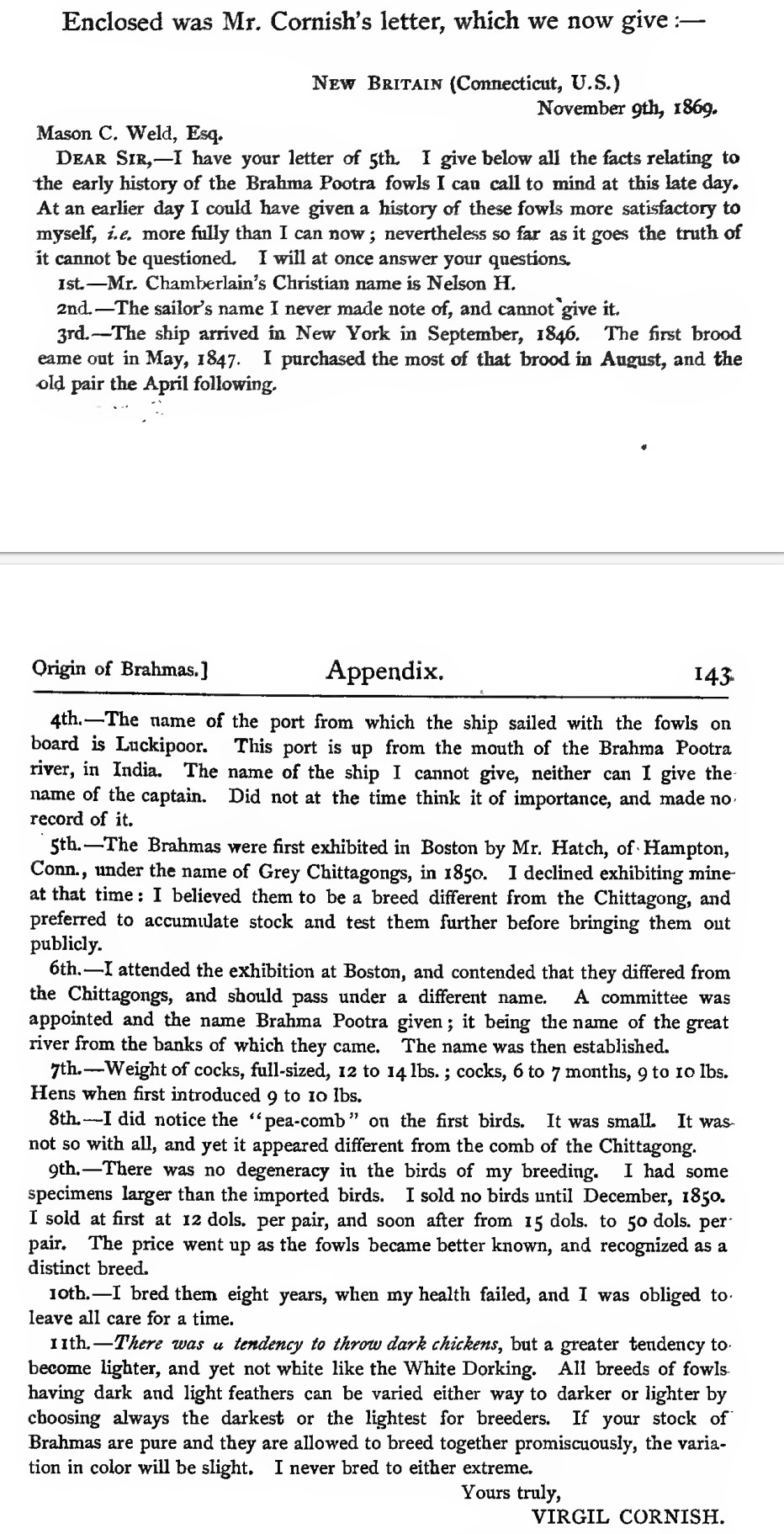The history and origin of the Brahma chicken.

One of the most striking features of the Brahma chicken is its immense size. These birds can weigh up to 16 pounds, making them one of the largest chicken breeds in the world.
Brahma chickens are a heritage breed that have a distinctive appearance, with long feathered legs and feet.
Brahma chickens are also known for their gentle disposition and are often used as pets or backyard chickens. They are hardy birds that can adapt to a variety of climates and are relatively easy to care for.
The Early Years: Origins of the Brahma Chicken.
Although the Brahma was first named as a breed in America, the chickens from which the Brahma was bred are believed to have originated in India, where it was bred for meat production.
During the mid-1800's, Brahma chickens were brought to the United States, where they quickly gained popularity as an ornamental bird. Their massive size and unique appearance made them a favourite among poultry enthusiasts and breeders, and they soon became one of the most sought-after breeds in the country.
In his book, The Brahma Fowl, written in 1870, Lewis wright notes that:
"The variety of fowl itself was the Grey Chittagong, to which allusion has already been made, and the first samples of which I obtained from Dr. Kerr of Philadelphia in 1850. Of this no one now entertains a doubt. They were the identical fowl all over in size, plumage, and characteristics.
The first public exhibition of Light Brahmas took place at the Fitzburg Poultry Show, on October 2nd, 3rd, and 4th, 1850, the chickens were the property of Dr. J. C. Bennett, of Great Falls. This pen was considered magnificent in every way, and was the principal attraction of the show.
Below: A pair of show winning Brahma from a poultry show in 1956.

There has been controversy and confusion over the origin of the Brahma. It appears to have developed in the United States from large birds, with heavily feathered legs, imported in the 1846 from the port of Luckipoor on the Brahmaputra river.
Here is a letter from Mr Cornish who claims to be the first breeder of the Brahma in the US. It was written on November 9th, 1869 to Mason C. Weld, Esq and published in a book called "The Brahma Fowl by Lewis wright in 1870.
Dear Sir, — I have your letter of 5th, I give below all the facts relating to the early history of the Brahma Pootra fowls I can call to mind at this late day. At an earlier day I could have given a history of these fowls more satisfactory to myself, i.e. more fully than I can now ; nevertheless so fer as it goes the truth of it cannot be questioned. I will at once answer your questions.
1st — Mr. Chamberlain's Christian name is Nelson H.
2nd. — The sailor's name I never made note of, and cannot give it.
3rd. — The ship arrived in New York in September, 1846. The first brood came out in May, 1847. I purchased the most of that brood in August, and the odd pair the April following.
4th. — The name of the port from which the ship sailed with the fowls on board is Luckipoor. This port is up from the mouth of the Brahma Pootra river, in India. The name of the ship I cannot give, neither can I give the name of the captain. Did not at the time think it of importance, and made no record of it.
Sth.— The Brahmas were first exhibited in Boston by Mr. Hatch, of' Hampton, Conn., under the name of Grey Chittagongs, in 1850. I declined exhibiting mine at that time : I believed them to be a breed different from the Chittagong, and preferred to accumulate stock and test them further before bringing them out publicly.
6th.— I attended the exhibition at Boston, and contended that they differed from the Chittagongs, and should pass under a different name. A committee was appointed and the name Brahma Pootra given, it being the name of the great river from the banks of which they came. The name was then established.
7th. — Weight of cocks, fully sized, 12 to 14 lbs. ; cocks, 6 to 7 months, 9 to 10 lbs. Hens when first introduced 9 to 10 lbs.
8th. — I did notice the "pea-comb" on the first birds. It was small. It was not so with all, and yet it appeared different from the comb of the Chittagong.
9th. — There was no degeneracy in the birds of my breeding. I had some specimens larger than the imported birds. I sold no birds until December, 1850. I sold at first at $12 per pair, and soon after from $15 to $50 per pair. The price went up as the fowls became better known, and recognised as a distinct breed.
10th. — I bred them eight years, when my health failed, and I was obliged to leave all care for a time.
11th. — There was a tendency to throw dark chickens, but a greater tendency to become lighter, and yet not white like the White Dorking. All breeds of fowls having dark and light feathers can be varied either way to darker or lighter by choosing always the darkest or the lightest for breeders. If your stock of Brahmas are pure and they are allowed to breed together promiscuously, the variation in colour will be slight. I never bred to either extreme.
Yours truly,
VIRGIL CORNISH.
Below: Here is the letter as it was published in the book.

The distinctive head shape and pea comb of the Brahma probably result from cross-breeding with Grey Chittagong birds of Malay type, imported from Chittagong in eastern Bengal (now Bangladesh); these characteristics distinguish the Brahma from the Cochin, which also derives from "Shanghai" birds.
Whilst humans have been keeping chickens for around 7400 years it is only in the last few hundred years that specific breeds have emerged.
How did the Brahma get its name?
Its name comes from the Hindu god Brahma, who is often depicted as having four faces and multiple arms, much like the bird's appearance.
At first there were many different strains and at least a dozen different names for the breed.
At a meeting of poultry judges in Boston in 1852, agreement was reached to name it "Brahmapootra"; this later became "Brahma". The breeds is named after the Brahmaputra river in India. The credit for shortening the name to Brahma goes to T.B. Miner, the publisher of The Northern Farmer magazine, who in 1853 used the truncated version of the name to save printing costs and space.
Brahmas were first exported to England in December 1852, when George Burnham sent nine "Gray Shanghaes" or light Brahma's to Queen Victoria as a gift.
Below: The pen of light Brahma chickens sent as a gift to Queen Victoria in 1852 by George Burnham.

The Dark Brahma variety was developed by English breeders from this stock, and later re-exported to the United States. Both the light and the dark (pencilled) Brahma were included in the first British Poultry Standard, published by the original Poultry Club of Great Britain in 1865.
Both the light and the dark were included in the first Standard of Perfection of the American Poultry Association in 1874; the buff variant was added in 1924.
The rise of the Brahma chicken.
As the demand for Brahma chickens grew, breeders began to develop new varieties, such as the Light and Dark Brahmas. These birds were smaller than the original breed but retained many of the same characteristics, including their gentle nature and hardiness.
By the early 1900's, Brahma chickens had become so popular that they were being exported to countries all over the world, including England, Australia, and Germany. They were often used for exhibition purposes and were even featured in poultry shows and competitions.
Today, the Brahma chicken remains a popular breed among poultry enthusiasts and backyard chicken keepers. While they are no longer as popular as they once were, they continue to be bred and exhibited around the world.
